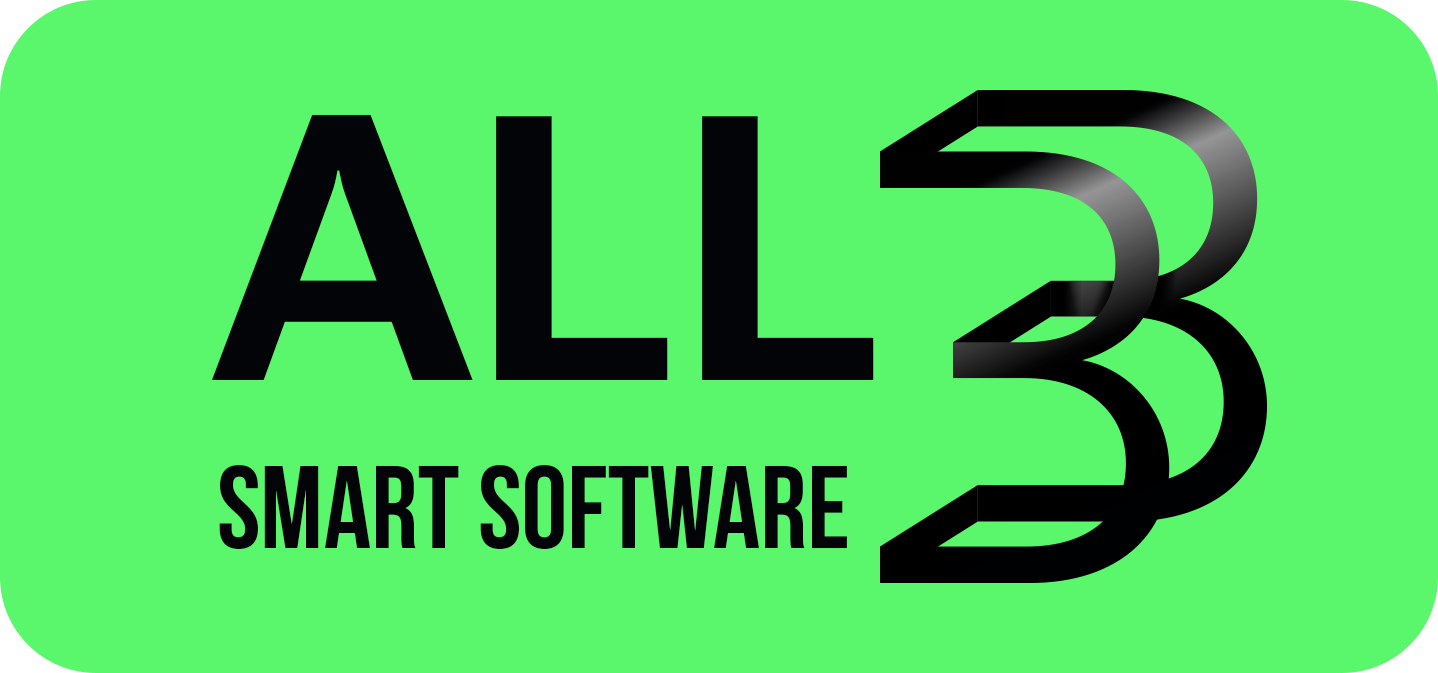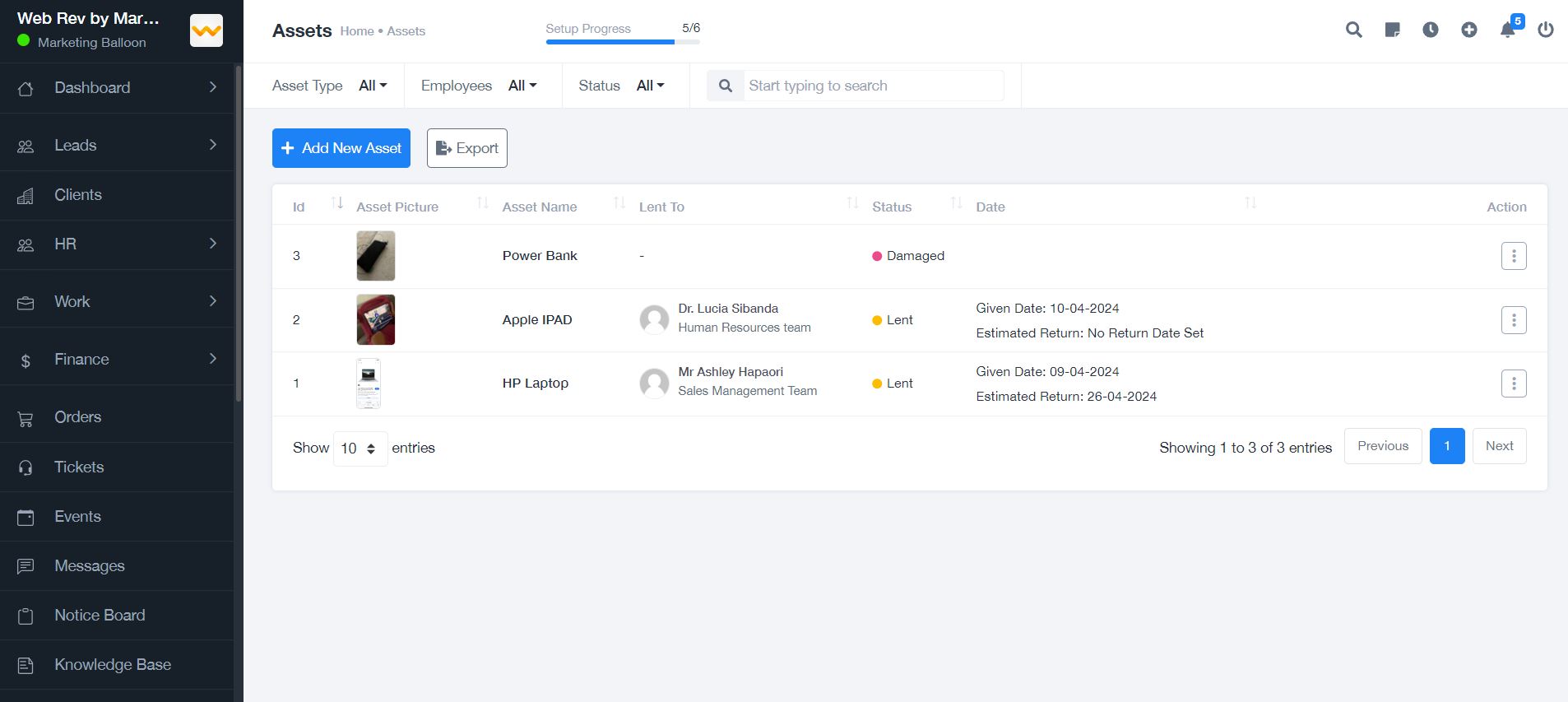Asset Management
Our Asset Management Module helps businesses track, manage, and optimize their physical and digital assets throughout their lifecycle. It is a crucial component in many business management systems, ensuring efficient utilization of assets, reducing costs, and maintaining compliance. Here's an overview of the key features typically found in a robust Asset Management Module:
1. Asset Registration and Tracking
Asset registration involves documenting and identifying all assets owned by the business. This feature typically includes:
- Asset categorization and unique identification (e.g., asset tags, barcodes, or RFID)
- Detailed asset profiles with descriptions, location, and purchase information
- Integration with GPS for tracking mobile assets
- Asset location tracking within facilities
2. Asset Lifecycle Management
Lifecycle management ensures proper maintenance and replacement of assets. This feature provides tools for:
- Tracking asset acquisition, usage, maintenance, and disposal
- Automated alerts for asset maintenance and inspections
- Asset depreciation calculation and reporting
- Asset retirement and disposal procedures
3. Maintenance Management
Routine maintenance is crucial for asset longevity and safety. This feature includes:
- Maintenance scheduling and tracking
- Integration with work order systems for repairs and maintenance tasks
- Maintenance history and documentation for each asset
- Automated alerts for preventive maintenance
4. Inventory and Spare Parts Management
Managing spare parts and inventory is essential for efficient asset maintenance. This feature typically offers:
- Tracking of spare parts and consumables
- Integration with inventory management systems for real-time stock levels
- Automated reordering based on stock thresholds
- Tools for managing inventory locations and transfers
5. Asset Analytics and Reporting
Comprehensive analytics and reporting help businesses make informed decisions about asset management. This feature provides:
- Customizable reports on asset usage, depreciation, and maintenance costs
- Real-time dashboards with key performance indicators (KPIs) for asset management
- Analysis of asset performance and utilization trends
- Integration with business intelligence tools for advanced asset analytics
6. Compliance and Regulatory Management
Staying compliant with industry regulations and safety standards is crucial for asset management. This feature includes:
- Tools for managing compliance documentation and certifications
- Automated alerts for compliance deadlines and inspections
- Audit trails for tracking changes and asset movements
- Integration with regulatory databases for compliance updates
7. Integration with Other Business Modules
An Asset Management Module should integrate with other business functions for seamless operations. This integration can include:
- Finance Management for asset valuation and depreciation
- Project Management for tracking project-related assets
- Human Resources for asset assignment to employees
- Inventory Management for spare parts and consumables
8. Mobile Accessibility
Mobile accessibility allows teams to manage assets on the go. This feature typically provides:
- Mobile apps for asset tracking and maintenance management
- Real-time synchronization across devices
- Integration with mobile scanning technology (barcodes, RFID, etc.)
- Offline access to asset information with automatic synchronization when online
9. Asset Security and Access Controls
Asset security is critical to prevent unauthorized access or theft. This feature offers:
- Role-based access controls for asset management
- Integration with security systems for asset protection
- Tools for tracking asset check-in and check-out
- Asset movement logs and audit trails
10. Asset Integration with Internet of Things (IoT)
Modern asset management often involves IoT integration for smart tracking and monitoring. This feature provides:
- Integration with IoT devices for real-time asset monitoring
- Automated alerts for asset status changes and movements
- Integration with environmental sensors for monitoring asset conditions
- Tools for predictive maintenance based on IoT data
These features collectively create a robust Asset Management Module that allows businesses to manage their assets efficiently, reduce costs, ensure compliance, and improve overall asset utilization. The integration with other business functions ensures a holistic approach to asset management, supporting business continuity and growth.


